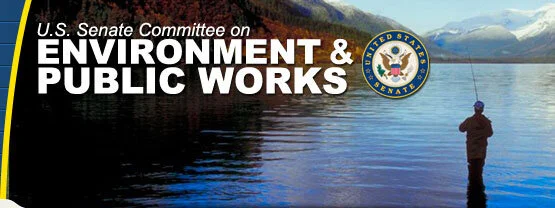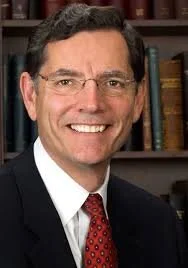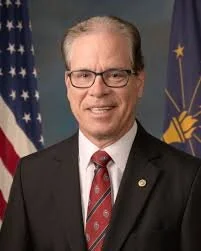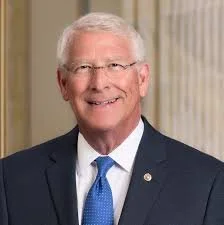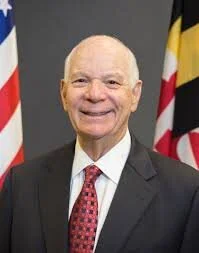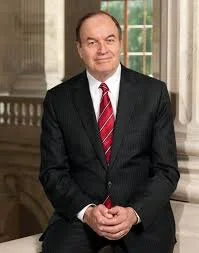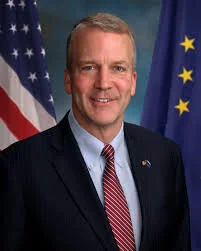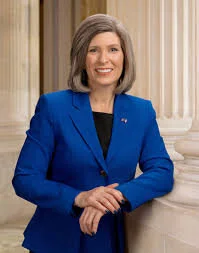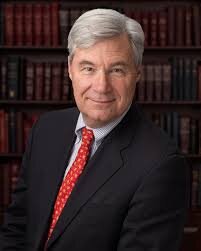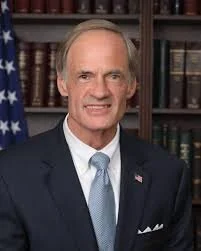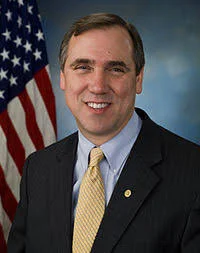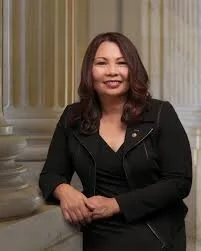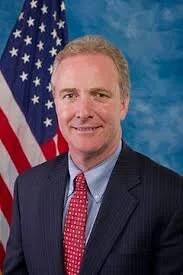Return to: Environmental Committees Homepage
United States Committee on the Environment and Public Works
The United States The Committee on the Environment and Public Works is a committee within the United States Senate. The Committee’s primary responsibilities include passing legislation related to the nation’s environmental air, water, fisheries, and oceanic quality and preservation, as well as control and maintenance of public buildings and infrastructure.
The Committee has oversight of programs within five cabinet-level departments and seven independent agencies, including the Department of the Interior's Fish and Wildlife Service, the Department of Transportation's Federal Highway Administration and the Coast Guard, the Department of Commerce's Economic Development Administration and National Oceanic and Atmospheric Administration, the Department of Agriculture's Natural Resources Conservation Service, the Environmental Protection Agency, the GSA's Public Buildings Service, the Council on Environmental Quality, the civil works program of the U.S. Army Corps of Engineers, the Tennessee Valley Authority, the Appalachian Regional Commission, the Nuclear Regulatory Commission, the Federal Emergency Management Agency, the Mississippi River Commission, and the nonperforming functions of the John F. Kennedy Center for the Performing Arts.
Committee Members
Scroll down to see which representatives are assigned to this committee.
United States Senate
Committee on Environment and Public Works
Click here to be directed to this Committee’s official website.
COmmittee History
In 1837, the Senate created the Committee on Public Buildings and Grounds to oversee the development of the Federal buildings in the young, but growing Federal City of Washington, DC. In 1947, during a reorganization of Senate committees, the panel was renamed the Committee on Public Works. Following another major organizational revision in 1977, its name was changed to the Committee on Environment and Public Works.
Over the years the committee's public works jurisdiction has grown from oversight of new Federal building construction, additions to the U.S. Capitol building and grounds, and the White House and its grounds, to legislative responsibility for the development of the Nation's interstate highway system, flood control and navigation projects.
In 1963, the responsibility for creating new laws to achieve air and water pollution control, rural and community economic development, and relief from natural disasters was given to the committee. The passage of the Clean Air Act in 1970, and the Federal Water Pollution Control Act of 1972, brought the committee recognition as the Senate's forum for protection of the environment. In 1977, the committee was assigned the jurisdiction over endangered species, fish and wildlife refuges and programs, and the regulation of nonmilitary nuclear power.
Committee Jurisdiction
RULE XXV, STANDING RULES OF THE SENATE
1. The following standing committees shall be appointed at the commencement of each Congress, and shall continue and have the power to act until their successors are appointed, with leave to report by bill or otherwise on matters within their respective jurisdictions:
(h)(1) Committee on Environment and Public Works, to which committee shall be referred all proposed legislation, messages, petitions, memorials, and other matters relating to the following subjects:
Air pollution.
Construction and maintenance of highways.
Environmental aspects of Outer Continental Shelf lands.
Environmental effects of toxic substances, other than pesticides.
Environmental policy.
Environmental research and development.
Fisheries and wildlife.
Flood control and improvements of rivers and harbors, including environmental aspects of deepwater ports.
Noise pollution.
Nonmilitary environmental regulation and control of nuclear energy.
Ocean dumping.
Public buildings and improved grounds of the United States generally, including Federal buildings in the District of Columbia.
Public works, bridges, and dams.
Regional economic development.
Solid waste disposal and recycling.
Water pollution.
Water resources.
(2) Such committee shall also study and review, on a comprehensive basis, matters relating to environmental protection and resource utilization and conservation, and report thereon from time to time.

